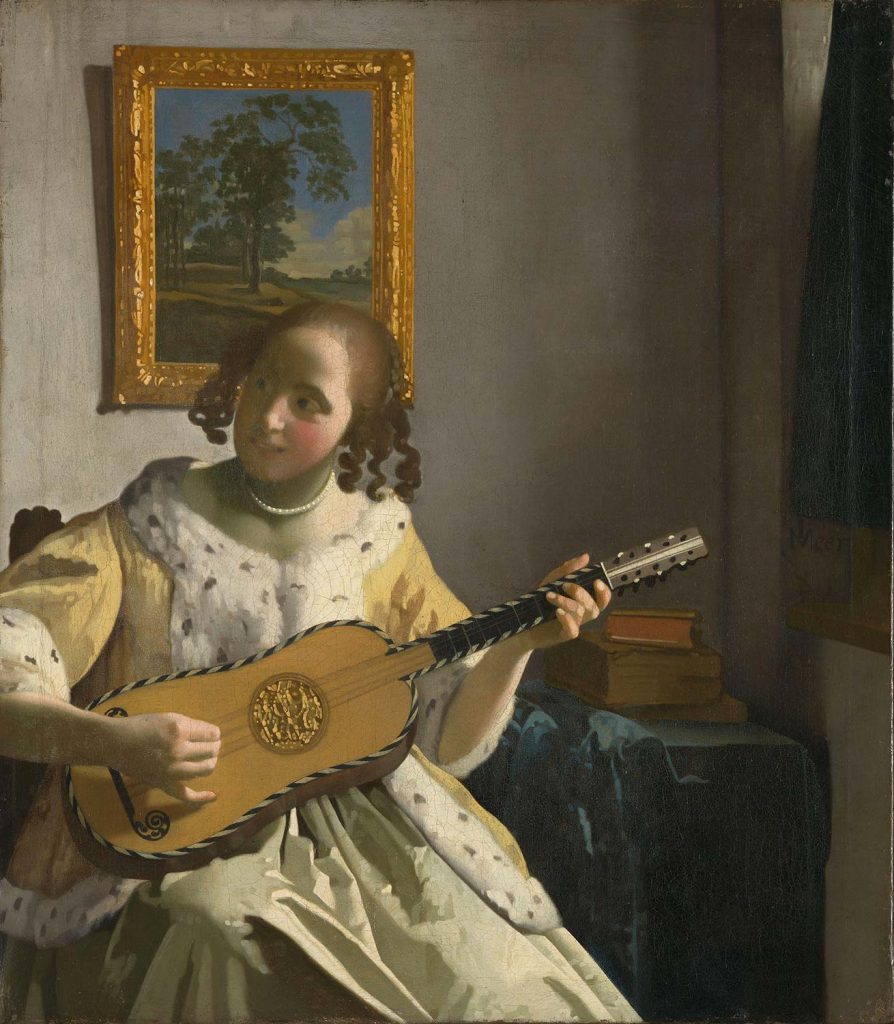
The Guitar Player by Johannes Vermeer was created in 1667. The painting is in Kenwood House, London. The size of the work is 48,5 x 41 cm and is made as an oil on canvas.
The Guitar Player represents a new direction in Vermeer’s art. Because he developed and perfected compositional balance and harmony during the 1660s, he was able to expand and paint scenes that show imbalance and fluctuation. Vermeer’s painting of The Guitar Player rejects compositional balance and harmony, which contradicts his previous paintings. This painting exhibits an unbalanced arrangement that depicts a lack of compositional consistency, but also rejects the past instrument of the lute to focus on the modern guitar. The rejection of the lute and depiction of the guitar may be linked to Vermeer’s compositional organization. Vermeer painted the young guitar player far to the left, covering the right half of the painting in light and shadow. Read more in Wikipedia
About the Artist: Dutch Baroque Period painter Johannes Vermeer specialized in domestic interior scenes of middle-class life. It is unclear where and with whom Vermeer apprenticed as a painter. There is some speculation that Carel Fabritius may have been his teacher. On 29 December 1653, Vermeer became a member of the Guild of Saint Luke, a trade association for painters. The guild’s records make clear that Vermeer did not pay the usual admission fee. It was a year of plague, war, and economic crisis; Vermeer was not alone in experiencing difficult financial circumstances… Read more
You can order this work as an art print on canvas from canvastar.com

